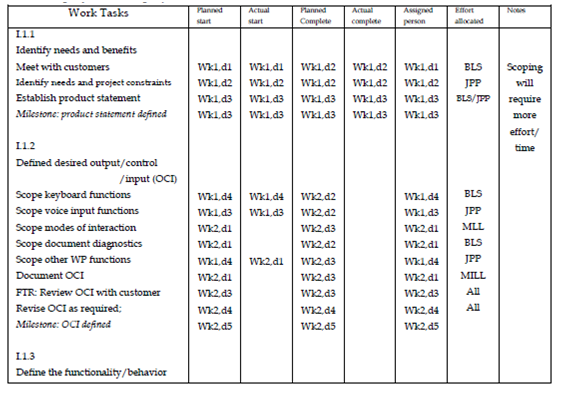Tracking the Schedule
The project schedule gives a road map for a software project manager. If it has been properly developed in the project schedule describes the tasks and milestones which must be tracked and controlled as the project proceeds. The Tracking can be accomplished in a number of various ways.
- Conducting periodic project position meetings in that each team member reports problems and progress.
- Calculate the results of all reviews conducted by the software engineering procedure.
- Determining however formal project milestones the diamonds describe in figure 8.4 have been accomplish through the scheduled date.
- Comparing original begin date to planned begin date for each project task listed in the project table.
- Meeting informally with practitioners to build their subjective assessment of progress to date and problems on the horizon.
In originality all of these tracking techniques are used by experienced project managers.
Control is employed through a software project manager to administer project resource cope with problems and direct project manager to administered project example for the project is on schedule and within budget reviews indicate in which real progress is being made and milestones are being reached the control is light. when problems occur the project manager must exercise control to reconcile them as fast as possible. Followers a problem has been diagnosed additional resources may be focused on the problem area in which Staff may be redeployed or the project schedule can be redefined.

Figure - an example project table
When faced with severe deadline pressure experienced project managers sometimes use a control method and project scheduling which is called time-boxing. The time boxing strategy recognizes in which the complete product may not be deliverable through the predefined deadline. Thus an incremental software paradigm is selected and a schedule is derived for each incremental delivery.
The tasks is associated with each increment are then time boxed. That means in which the schedule for each task is adjusted through working backward form the delivery date for the increment. A box is put around the each task. When a task hits the boundary of its time-box plus or minus 10 % work stops and the next task starts.
The initial response to the time-boxing approach is often negative. If the work is not finished how can we proceed? The answer lies in the way work is completed. By the time which time-box boundary is encountered it is likely that 90 % of the task has been completed. The remaining 10 % although important can (1) be delay until the forward increment for (2) be completed late if needs. Rather than becoming stuck on a task the project proceeds toward the delivery date.